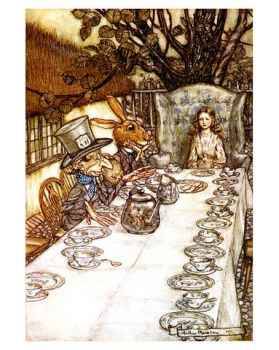One January 30, Claire Fontaine comes home late from work to find her only daughter, Mia, has run away. What she discovers, while looking for Mia and later after Mia is found, is that her A-student daughter has been leading a double life. Claire has known, with that gut-instinct most of us mothers have, that something is wrong with Mia, something very wrong.
Claire admits to making three major mistakes while raising Mia, blaming them all on not listening to her innermost voice. Finally, she does listen to that voice, and while she still makes mistakes, she and Mia are on the road to repairing their family--although it doesn't look like it at the time.
The story is written in alternate voices of Claire and Mia, each bringing their perspective to the situation. Several lessons stood out for me, especially as a mother. Claire mentions that when God wants your attention, He throws feathers. If that doesn't work, He throws bricks. Aha--my infamous clue-by-four! Claire ignored her "inner voice," the one that told her there was something wrong with her first husband and his family. Instead of fleeing, she believed him when she was told it was her. That self-doubt also recurred when she first tried to get help for Mia. Fortunately, she eventually stood firm and did what she knew had to be done, despite what "everyone" else told her. The worst decisions I've ever made is when I listened to the "experts" instead of my instincts.
And, finally, Claire talks about the sexualization of children, especially young girls, by our culture and how we won't let them compete because it might hurt their feelings, but we let the culture sell them thongs and skimpy t-shirts. If we try to protect our children from sexually provocative films and music, it's called "censorship" and we parents are prudes. I've never liked the Bratz dolls, never let my daughters have them, and now I know why. I like the fact that my local Catholic grammar school does not allow nail polish or make-up or "extreme" hairstyles. I like the fact that the kids have to wear shoes they can run or jump or play in through 8th Grade. I'm glad I followed my mother's plan and not let my daughters grow up by dressing as adults until their late teens.
Many social critics don't understand why parents get upset over sexually explicit material but not violence. Could it be that some of us parents see sexually exploitation as more of a danger than violence? Especially for those of us who live in areas where violence is relatively rare but suggestive sexuality is on display at our local mall?
Another cultural eye-opener, for both Claire and myself, is the heroin problem and drug culture in rural Indiana. The book discusses it in the context of Mia's experience--and Claire's naivete. I know that the idea of an idyllic agrarian society is myth and has been (in River Runs Through It, during the 1920's the drug of choice is alcohol.) In college I met "farm kids" who explained their drug and alcohol use in terms of "What else is there to do?" (And these were the honor students, involved in Student Council, Marching Band, Yearbook, etc.) In Mia's experience, the parents are as involved in the drug and alcohol scene as their children--I got the feeling that both generations had just given up. Money alone isn't the answer--these folks are sick in their soul, much as the street kids who hang around Venice Beach are. How did they lose hope? How do they regain it? What can we do to help?
I'm not sure there's an answer and that frightens me. I'm an American and a Mom. I should be able to fix anything and everything. I should be able to make things right! And it frustrates me that I can't. (Perhaps this is the basis of the anger I see in many liberals. We should be able to fix these problems. But we can't, or, we can try but the problem just won't stay fixed.)
Believe it or not, this story has a happy ending. Claire and Mia learn a lot about how their reactions to past trauma colored their perceptions of themselves and the world. They relearn coping strategies and how to communicate and to listen. They become accountable for their actions and reactions. Both Mia and Claire acknowledge this growth took hard work on their parts and strength of character on those who helped them along the way.
ComeBack is important because it reaffirms the mother-child bond, the importance of mothering instinct. And Claire and Mia learn the hardest lesson of all--that while we can't change the past or make our loved ones into the "perfect" person, we can change ourselves. We can change destructive behaviors. We can grow, no matter what our age.
I sort of wish I had read this book earlier in my mothering career, when DS#1 was entering his teens. But I can still use the lessons from it now.
On the March Hare scale: 4.5 out of 5 Golden Bookmarks.
Thursday, July 06, 2006
Book Review: ComeBack: a mother and daughter's journey through hell and back
Posted by
March Hare
at
6:40 AM
![]()
Subscribe to:
Comment Feed (RSS)




|